As we were saying yesterday… 525 years later
Wednesday, July 24, 2019
Number: 87
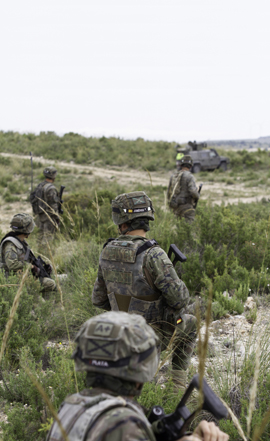
The post of sergeant is almost as old as the army itself. It was at the end of the 15th century, as a result of the creation of the first modern army, when the sergeants started to take the first steps up a ladder which took centuries to solidify into the non-commissioned officer (NCO) structure.
The figure selected by direct choice by the command - according to their experience in combat - has little in common with the sergeants who choose their destiny every year after going through the General Basic NCO Academy. But today’s sergeant wouldn’t look the same without taking into account the past 525 years, and how he ended up here.
“It is fair to say that that the sergeant has been, is and will always be the soul of the non-commissioned officers, influencing their way of being and acting with a sense of history and tradition,” declares Warrant officer class one Coloma.
Each and every one of them is an example of the values which a sergeant represents. In addition to the values of the whole military, they have their own: “discipline, loyalty and getting to know those below them well”, highlights Sergeant Jaén, of the Headquarters Battalion of the 10th ‘Guzmán el Bueno’ Brigade. She adds: “We are the backbone of the army, the middle step between the officers and the troops. Our mission is to correctly comply with orders.”
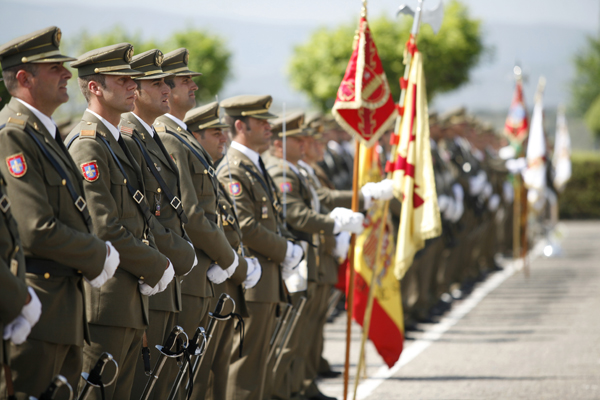
She is one of the 746 female sergeants to have come through the Academy since class XVII in 1990, when the first woman studied there. The phrase which sums up the incorporation of women is: “equivalency with her colleagues.” Without a doubt, this is another advancement to be added to the list of those brought by the past five centuries.
In history...
The figure of the sergeant emerged in 1494.However, it would take until the mid-19th century for a ‘basic’ military training to come about.
In the beginning, combat experience is the only training ground for sergeants. In most cases, their appointment is by direct selection. They are the only intermediate post between troops and officers.
The Royal Order of the 28th of June 1632 brings together the conditions for rising to the level of sergeant amongst soldiers who have at least eight years of service and are known to be experienced and brave and who could read and write. At that time, roughly 90% of the population was illiterate, meaning few people met this criteria.
On the 20th of November 1845, the green light was given to create the first Regimental Schools for soldiers, corporals and sergeants, which opened the following year. Slightly later, in 1853, the first Academy of Sergeants in Toledo was created, with the aim of preparing the first sergeants who applied for their pass to Ultramar with the position of warrant officer class one or warrant officer class two. In 1885 the Special Academy of Sergeants was created as a result of a huge reorganization of the troops, with the aim of training sergeants in order to be promoted to officer level.
The NCO Corps did not exist as such until 1931, although the sergeant continued to be included within the soldiery class.
It would be four more years until they were integrated as NCOs. In 1955 a new Recruitment of Volunteers Law was passed as well as changes to entry and posting in the NCO Corps and Auxiliary Ranks, until, as a consequence of the 13/74 Bases Law and the creation of the Basic Scale of NCOs and the Special Scale of Chiefs and Officers, the General Basic NCO Academy was created on the 31st of May 1974.
A different identity...
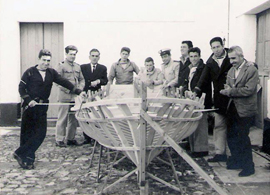
Some units, such as the Legion or the Sea Company, created their own ranking, with their own characteristics. The creation of the Corps of NCOs in the Legionnaire Ranking in 1933, happened two years after the establishment of the Army’s NCO Corps. This prevented them from gaining positions outside of their Tercio (now defunct military units in the Spanish Army). In 1935 sergeants were included amongst the NCOs in the Tercio’s personnel and did not enter the soldiery until that time. This had happened in the wider army in 1934.
With the creation of the Basic Scale of NCOs, in 1974, some ranks amongst the NCO corps disappeared. However, it wasn’t until the 1st of May 1990 that the Legionnaire Scale was disbanded and members were able to integrate into the Basic Scale.

The Sea Company has a similar story, which had its own structure until it disappeared in 1990 and its members were given the opportunity to integrate into other units. Now, they still have three active NCOs, in the position of warrant officer, which gained access through the old Sea Scale and stayed in the company. This is the case for Warrant officer Loano who joined in 1981. “We joined as sergeant boatswain or calafato sargeant”, a peculiarity of the unit, the oldest in the Spanish army.
The Sergeant of the future
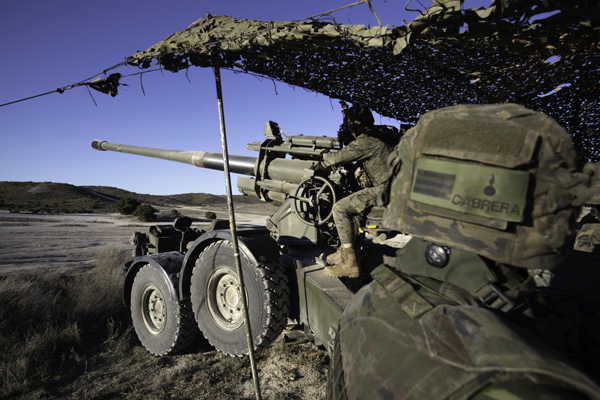
The Army is currently facing a big change, with their sights firmly set on 2035. Warrant officer class one Coloma highlights that the Army “must invest in long term solutions and equipment, as well as in people. This is essential to fulfil its missions.”
As such, the figure of the sergeant is not alienated from the future army and will be extremely important for Force 2035. “The non-commissioned officers, particularly the sargeants, as tactical leaders working closely with the combatants, must be ready to reinforce their leadership and be able to convince, motivate, persuade and influence the members of their units and teams in order to achieve a common goal,” he notes.
There is no doubt that the strengthening of this leadership will be key for a future which will be characterised by volatility, uncertainty and complexity. The sergeant of the future has 525 years of history and constant transformation which has made him adapt to different situations. Now, once again, the sergeant must take on the new challenges which await him.
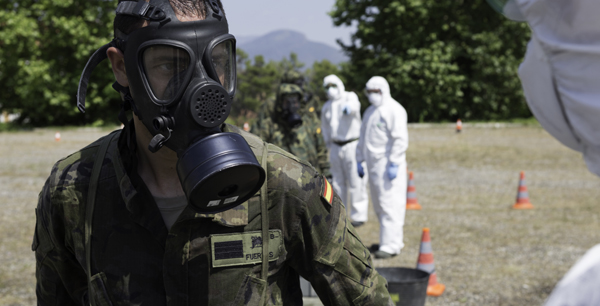
The dream of an academy…
The creation of the General Basic NCO Academy (AGBS, to use the Spanish acronym), with a base in Tremp, Lérida in 1974, represented the culmination of a number of attempts (spanning centuries) to create regulated training for the NCO structure in Spain. “Just like the sergeants in the Tercios, as the years have gone by the sergeants in the Basic Scale have become a fundamental part of the companies, thanks to the competency and professionalism shown in the training and preparation of their unit,” highlights Warrant officer class one Coloma.
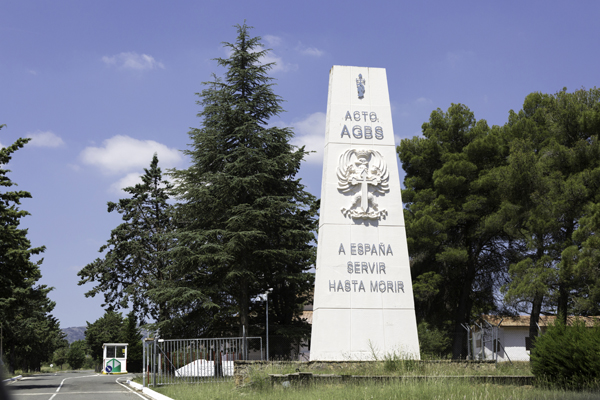
Currently, Military Training to enter the NCO Scale is divided into three years as set out in the 25th of August Ministerial Order 60/2011, which approves the study plans for military training for entrance into the NCO scale.
The training begins with an initial period in the General Basic NCO Academy, where the students get a general military training. After, they continue with training in academies dedicated to different specialisms. Shortly before finishing the last course, the student sargeants return to the General Basic NCO Academy and carry out the ‘Minerva’ exercise, before the presentation of Royal Offices which concludes their training.
During the teaching and training process, the sergeant is trained as a leader and expert in their professional field. All of this is reflected in the ‘Minerva’ exercise - the last exercise before the sergeants are given their postings - which seeks to strengthen the figure of the patrol, squad or team leader. ‘The students lead the different stations that make up the exercise,” explains Warrant officer class one Viñuales, who is posted with the General Basic NCO Academy.
In this way they promote values like comradeship, loyalty, discipline and group cohesion. Everyone has the opportunity to lead one of the stations in their speciality and, in this way, share what they have learned in their respective academies with the rest of the group.
Sergeant Palomares, posted in the Logistical Group in the 10th ‘Guzmán el Bueno’ Brigade, emphasises that the training has been improved. As a member of the last class to graduate before the study plan changes in 2011, he recognises that training is becoming more and more complete. ‘I started in 1998 as a soldier and later, in 2011, I left the Academy as a sergeant. It is a source of great personal pride to have a team in your care and to be able to make the decisions,” he states.
Warrant officer class one Viñuales recognises that the training has changed and that it has adapted to modern times. “The sergeants finish their studies with the rank of superior technician from the General Education System, as well as their own military specialism.”
After more than five hundred years, a solid structure has emerged from what was once just a dream of having a unique identity.
ARMY UNITS
- Araba Álava |
- Albacete |
- Alicante |
- Almería |
- Asturias |
- Ávila |
- Badajoz |
- Barcelona |
- Burgos |
- Cáceres |
- Cádiz |
- Cantabria |
- Castellón |
- Ceuta |
- Ciudad Real |
- Córdoba |
- A Coruña |
- Cuenca |
- Girona |
- Granada |
- Guadalajara |
- Gipuzkoa |
- Huelva |
- Huesca |
- Islas Baleares |
- Jaén |
- León |
- Lleida |
- Lugo |
- Madrid |
- Málaga |
- Melilla |
- Murcia |
- Navarra |
- Ourense |
- Palencia |
- Las Palmas |
- Pontevedra |
- La Rioja |
- Salamanca |
- Segovia |
- Sevilla |
- Soria |
- Tarragona |
- Santa Cruz de Tenerife |
- Teruel |
- Toledo |
- Valencia |
- Valladolid |
- Bizkaia |
- Zamora |
- Zaragoza



